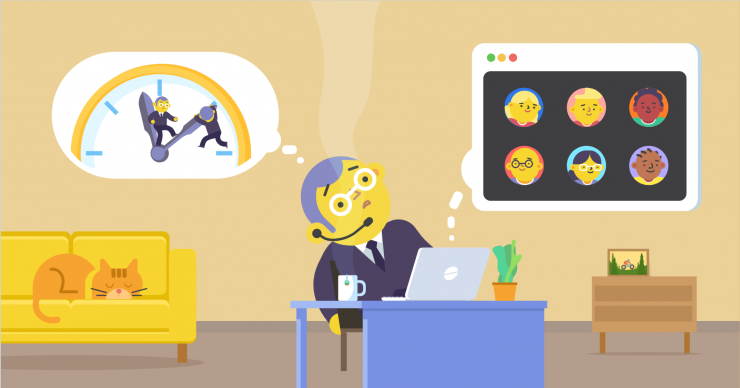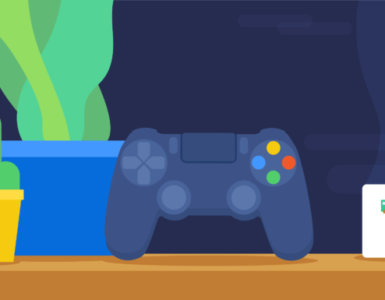It’s Friday afternoon and we are ready to hit the road and start our weekend getaway. Our last Zoom call is here and we are done for the day (or week)! Let the party begin! And all of a sudden, the screen freezes, the voices start to glitch, the internet crashes, and all hell breaks loose. We aren’t going anywhere anytime soon…
Have you ever been in a situation like this before? Feeling so exhausted with all of these tiresome virtual calls all day long. This wasn’t the case when we were talking to people face-to-face now, was it? We are all experiencing burnout from constant video conferencing, a phenomenon known as Zoom fatigue.
A recent study by Robert Half says that 44% of people suffer from video call fatigue.
Even though this is a completely new concept, it is still an impactful and worrisome trend which is rising high ever since this pandemic has started.
In this article, we are going to talk about what Zoom fatigue is, what causes it, and what we can do to fight it.
Stay tuned!
What is Zoom fatigue?
So, I’d like to start by pointing out something important: when we say Zoom fatigue, we are talking about the apathy caused by video conferencing in general, not just Zoom. I just wanted to say it out loud because I believe it’s really unfair to Zoom since it is just one of the tools that we use for video conferencing.
Anyway, Zoom fatigue can be explained as a general feeling of extreme tiredness and exhaustion caused by online video meetings. If our work requires us to participate in multiple video chat meetings per day, it will eventually require more mental processing than face-to-face talks. And I promise I didn’t make this up, there is a whole research on the matter.
Symptoms of Zoom fatigue
Have you ever felt like grabbing a coffee (or a beer or two) to get you through the day after finishing one of your virtual meetings? Congratulations, you’ve probably experienced Zoom fatigue. Now, don’t get me wrong. It’s not like you will be drained out every time you have a video call. However, if you are constantly on calls throughout the day, the chances are you’d feel burned out.
So, how do you know if this is what you are experiencing?
These are some of the Zoom fatigue symptoms:
- Anxiety
- Headaches or migraines
- Exhaustion
- Eyestrain
- Back pain
- Low productivity
- Lack of concentration
- Pessimism
The symptoms can vary, depending on the person experiencing the problem. Some can experience only one or two symptoms, but others may experience most of them.
Causes of Zoom Fatigue
Professor Shuffler believes that people tend to feel obliged to perform when they are in front of a camera. Funny thing is that when we are on a call and we can see everyone on the camera, we tend to look at ourselves on that tiny live image in the corner of our screens. This adds an extra level of self-awareness. We spend a lot of energy during that performance because we don’t include body language and gestures as we normally would during face-to-face talks.
Additionally, some experts suggest that the delays in verbal responses during our talks may have a negative impact on our connections. Even when our internet works great, there are still some delays when we talk to others, and this has a negative impact on our brain.
We also become more sedentary. We don’t need to get up and go to the conference room to have a meeting. We can simply pull up a screen on our laptop. This sedentary lifestyle causes harm to our mental state.
Tips to overcome Zoom fatigue
So how do we fix this?
Let’s find out!
- Turn off the camera
We don’t always need to show our smiling faces. We can give it a rest and relax our cheekbones from time to time.
The idea of being seen and being presentable during the calls causes distractions and makes us feel tired. In most cases, you don’t even need a camera. For example, if someone is presenting, they don’t need to see you. Also, if there is a large group of people at the meeting, nobody will be bothered looking at you.
If we need to have the camera on for some reason, we can hide the self-view and we won’t have to look at ourselves. This will reduce the level of anxiety because we won’t be preoccupied with our looks.
- Consider alternative communication tools
Zoom, Highfive, or Google Hangouts are really cool software. However, they aren’t the only way to communicate with your colleagues. Give yourself a break and try something different:
- Email – This could’ve been an email, right? Just send a short one instead of scheduling another Zoom call.
- Chanty – Messaging apps such as Chanty are a great way to stay in touch and share information with your colleagues. Messages won’t burn you out like video calls.
- Phone – Just pick up the phone and cut back on virtual meetings.
- Avoid multitasking
I know it’s tempting to do more at once, but research shows that if we do multiple things at the same time, it takes a toll on our productivity. And let’s face it: nobody is good at multitasking. Close other tabs and your email so you can focus on the video call. Effective virtual calls require more brain power, so multitasking in these circumstances becomes extra problematic.
- Fix your schedule
When we have back-to-back meetings all day long, we are burned out. What we need are breaks between meetings to give our mind and eyes a rest, and stretch our legs. Also, be aware of the time. If your meeting is scheduled for 30 minutes, stick to it. Don’t push it to 45 minutes. Say your goodbyes and let your colleagues get on with their lives.
- Move your body
Speaking of breaks, we need to walk it. Back in the days when we used to go to the office and finish up a meeting, we would head back to our desk or to the kitchen to grab a cup of coffee. Nowadays, we are just closing our Zoom application, opening our Google Chrome, and continuing where we left off. We don’t give our brain a break after the call. Try to make it a habit to exert some energy by getting up and getting outside. Give yourself some fresh air before your next task. It will help you focus and get through the workday productively.
- Banter
When you have a face-to-face meeting, do you ever jump straight to the point? There is always a bit of chit-chat, jokes, or a weekend story. Zoom fatigue is not just about the tech, but also about the communication. Crack a joke and try to make everyone laugh. A hearty laugh goes a long way. Even a brief moment of light conversation before diving into the agenda can boost morale and make the
- Designate a meeting-free day
You are probably not the only one in your company that is feeling the Zoom fatigue. Talk to your colleagues about it and establish a meeting-free day. On that day, the whole company decides not to schedule meetings. This will give you a chance to focus on heads-down work without trying to fit it in between calls. You can also flip it, and have one day where people can book meetings. If that is doable of course.
- Say “no”
Do you really have to attend all video calls? The answer is probably no. This is one of the toughest things you’ll have to do, but it is really effective. You can ask the meeting requester what they want to discuss and see if that works for you. If you think the meeting won’t be worth your time, feel free to decline. It’s essential to evaluate each meeting’s value to your workflow and make sure you’re not wasting time that could be spent more productively.
- Use recorded asynchronous videos instead of calls
Video messages can sometimes completely replace video calls. They are more efficient and clear. Not only do they save us time, but also our colleagues’ time. By recording short, to-the-point messages, you can convey the same information without the need for an actual meeting, making it easier for others to digest the content at their own convenience.
Final Thoughts
Video calls are here to stay, but Zoom fatigue isn’t. While using Zoom and its alternatives, follow these steps and they will help you develop a working routine. You will soon start to see the video calls as a productivity tool and not a problem. As I mentioned earlier, you can always use other platforms such as Chanty that offer more than just video calls. Our platform gives you a chance to record yourself talking, send messages, GFs, emojis, and so much more. These features make the battle against Zoom fatigue a lot easier.
Beyond that, be mindful of the balance between work and rest. Remember to schedule time for breaks, keep meetings concise, and encourage downtime for employees to recharge. Incorporating these practices into your routine helps create a healthier, more productive environment.
And last but not least: remember that this past year has been challenging for all of us, and stress has manifested itself in many different forms. So don’t be so hard on yourself. We are in this together.









Add comment